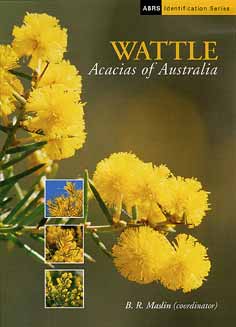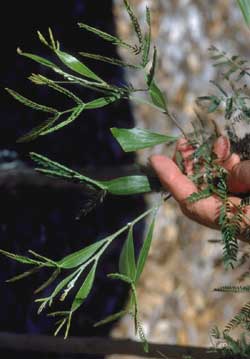The genus Acacia includes more than 1000 species in Australia. In most of these species, the leaf-like foliage of mature plants is actually represented by phyllodes (modified leaf petioles), typical bi-pinnate foliage being present only on very young plants.
Most of these phyllodinous species are classified into three major Sections of the genus Acacia, Section Phyllodineae with about 390 species, Section Juliflorae with about 235 species, and Section Plurinerves with about 215 species (Maslin BR, 2001. WATTLE - Acacias of Australia cd-rom available from CSIRO Publishing, Melbourne).
More than 250 thrips species in the subfamily Phlaeothripinae are now known from these phyllodinous Acacia species, apparently all feeding on the green tissues, but restricted almost entirely to the two Sections Juliflorae and Plurinerves. These thrips species, also the genera to which they are assigned, are not found on any other plants. More than 25 of the species are known to induce galls on phyllodes of particular Acacia species.
A larger number of species create their own domiciles by fixing two or more pairs of phyllodes together, or even by weaving a tent-like structure using a secretion from the anus, although about half of the Phlaeothripinae found on Acacia are opportunists and invade and breed in spaces created and abandoned by other insects. All of these Acacia thrips are phytophagous.
The collaborative research programme on these Acacia thrips was developed by Bernie Crespi of Simon Fraser University, Canada, together with Mike Schwarz of Flinders University, Adelaide, and Laurence Mound at CSIRO Entomology, Canberra, and has given rise to more than 40 publications on their taxonomy, evolution, behaviour and host-plant relationships.

CD ROM: WATTLE - Acacias of Australia

Phyllodes and bipinnate leaves on young plant of Acacia melanoxylon